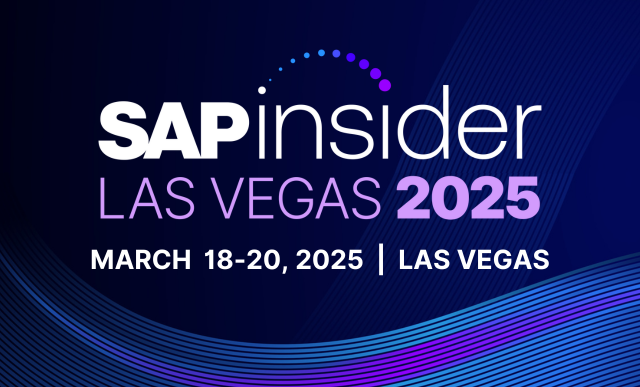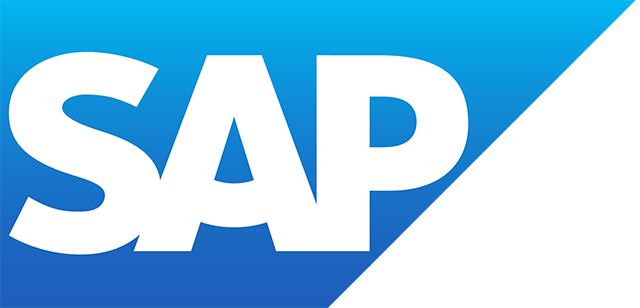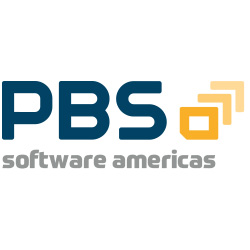SAP Data Governance
Filter By
Browse By
- SAP Analytics and AI
- SAP Application Development and Integration
- All SAP Application Development and Integration
- SAP ABAP
- SAP ABAP Development Tools
- SAP ABAP Test Cockpit
- SAP API Management
- SAP BAPI
- SAP Basis
- SAP BRF
- SAP Business Application Studio
- SAP CMS
- SAP Design Studio
- SAP Development Tools
- SAP DevOps
- SAP EAI
- SAP EDI
- SAP Extension Suite
- SAP Fiori
- SAP Fiori Elements
- SAP Integration Suite
- SAP Low Code Application Development
- SAP Low Code Automation
- SAP Netweaver
- SAP Release Management
- SAP UI5
- SAP Web Application Server
- SAP Web IDE
- SAP Business Process Management
- SAP Center of Excellence
- SAP CIO
- SAP Customer Experience
- SAP Data and Data Management
- All SAP Data and Data Management
- SAP BW
- SAP BW/4HANA
- SAP Crystal Reporting
- SAP Data Archiving
- SAP Data Center
- SAP Data Governance
- SAP Data Integration
- SAP Data Migration
- SAP Data Quality
- SAP Data Services
- SAP Data Strategy
- SAP Data Visualization
- SAP Data Warehouse Cloud
- SAP DMS
- SAP Document Control
- SAP EIM
- SAP ETL
- SAP ETL Tools
- SAP HANA
- SAP HANA Administration
- SAP HANA Deployment Infrastructure
- SAP HANA Studio
- SAP Master Data
- SAP Master Data Governance
- SAP MDM
- SAP Enterprise Architect
- SAP Enterprise Asset Management
- SAP ERP
- SAP Finance
- All SAP Finance
- SAP Accounting
- SAP AR AP
- SAP Asset Accounting
- SAP Billing Systems
- SAP BPC
- SAP BRIM
- SAP Cash Management
- SAP Central Finance
- SAP Controlling
- SAP COPA
- SAP Cost Center Accounting
- SAP e-invoicing
- SAP FICO
- SAP Finance Automation
- SAP Financial Closing Cockpit
- SAP Financial Consolidation
- SAP Financial Planning
- SAP FX Risk
- SAP General Ledger
- SAP Global Tax Management
- SAP Hyperion
- SAP Order to Cash
- SAP Payment Processing
- SAP Profitability Analysis
- SAP Rebate Management
- SAP S/4HANA Finance
- SAP Universal Journal
- SAP Governance Risk and Compliance
- SAP Human Capital Management
- SAP Intelligent Technologies
- SAP Platform and Technology
- All SAP Platform and Technology
- SAP Business Technology Platform
- SAP Cloud Connector
- SAP Cloud Integration Platform
- SAP Cloud Migration
- SAP Cloud Platform
- SAP Cloud Providers
- SAP Cloud Strategy
- SAP Container Platform
- SAP Digital Asset Management
- SAP Digital Integration Hub
- SAP Digital Signature
- SAP HANA Enterprise Cloud
- SAP HEC
- SAP Hyperscalers
- SAP Infrastructure
- SAP Messaging
- SAP Smart Forms
- SAP Quality and Testing
- SAP Security
- SAP Spend Management
- SAP Supply Chain Management
- All SAP Supply Chain Management
- SAP APO
- SAP Asset Management
- SAP Business Network
- SAP Digital Manufacturing Cloud
- SAP Digital Twin
- SAP EWM
- SAP IBP
- SAP Inventory Management
- SAP Label Printing
- SAP Logistics
- SAP Manufacturing
- SAP Manufacturing Automation
- SAP MES
- SAP MII
- SAP MM
- SAP MRO
- SAP MRP
- SAP Order Management
- SAP Plant Maintenance
- SAP PLM
- SAP Production Planning
- SAP S&OP
- SAP SD
- SAP SPM
- SAP Supply Chain Planning
- SAP Track and Trace
- SAP Transportation Management
- SAP System Administration
Data Governance: An Overview and Key Considerations
What Is Data Governance?
SAP data can deliver innovation, drive user experience, and provide competitive advantage. The process of marrying SAP data with non-SAP data from different systems — from Internet of Things devices to the back office to an organization’s web systems — is defining data culture around the world.
Simply combining data, however, is not enough. Proper management is essential to realizing its value.
Data governance is considered a core component of an effective data management strategy. Data governance can ensure that data is consistent, accurate, and protected.
The Data Governance Institute (DGI) defines data governance as “a system of decision rights and accountabilities for information-related processes, executed according to agreed-upon models which describe who can take what actions with what information, and when, under what circumstances, using what methods.” (Read the DGI’s 10 rules of engagement.)
Data Governance: An Overview and Key Considerations
What Is Data Governance?
SAP data can deliver innovation, drive user experience, and provide competitive advantage. The process of marrying SAP data with non-SAP data from different systems — from Internet of Things devices to the back office to an organization’s web systems — is defining data culture around the world.
Simply combining data, however, is not enough. Proper management is essential to realizing its value.
Data governance is considered a core component of an effective data management strategy. Data governance can ensure that data is consistent, accurate, and protected.
The Data Governance Institute (DGI) defines data governance as “a system of decision rights and accountabilities for information-related processes, executed according to agreed-upon models which describe who can take what actions with what information, and when, under what circumstances, using what methods.” (Read the DGI’s 10 rules of engagement.)
Key Considerations for SAPinsiders
The following steps can help you implement effective data governance:
- Create a strong business case for data governance. According to SAP partner Winshuttle, you need to be able to clearly communicate the value of your data to gain support from leadership. Winshuttle’s Winshuttle Foundation and Winshuttle Studio offer data management capabilities. According to the vendor, your data should be maintained through a data governance program that can ensure data quality and proper management, while complying with regulations to keep the data safe and effective.
- Increase revenue potential with a strong data governance foundation. Consider the approach of Breakthru Beverage Group. On a mission to become a fully integrated, data-driven business, the company first built a foundation with its data governance program. The initiative to cleanse and conform its material, vendor, and customer data was supported by SAP partner Protiviti, and resulted in a scorecard on data cleanliness as well as a downstream benefit: revenue generation, by enabling the business to more quickly activate products and more accurately report on them. Read the full data story.
- Set the stage for standardization and automation capabilities. In 2016, we wrote about Keurig Green Mountain’s approach to data governance. In response to meteoric growth and a growing love of the single-cup brew, the company undertook an ambitious data governance project. It transitioned from a data maintenance to a data governance organization. At the time, Keurig’s Director of Master Data Management Business Process Eileen Hanafin said its data governance initiative set the company up for future standardization and automation capabilities with a focus on continuous improvement.
895 results
-

 Premium
Premium
6 Tips for Improving Reporting Governance
Reading time: 12 mins
Make sure your reporting is accurate by following these six surefire tips for reporting governance. Key Concept The term SAP reports can be rather confusing because in SAP lingo, the term “reports” is applied in general to SAP programs. The context of this article is the traditional understanding of this term — an application or...…
-

3 ways Trusted Data Critically Impacts SAP Migration
Reading time: 5 mins
If you’re considering starting an SAP migration project, you may be weighing the benefits against the amount of work required. An SAP migration can benefit your organization in several ways, such as increasing cost-efficiency, accelerating project timelines and reducing risk.
-

SAP Data Services: Integrating with SAP BW on SAP HANA
Reading time: 11 mins
Learn the process of loading data into an SAP BW on SAP HANA system using SAP Data Services and SAP BW extractors. Explore some of the advanced data-transformation options and learn how to leverage existing SAP BW extractors to rapidly load data to an SAP HANA enterprise data warehouse. Membership Required You must be a…
-
-

 Premium
Premium
Configuring and Monitoring Key Performance Indicators in SAP MII
Reading time: 37 mins
Learn how the key performance indicator (KPI) framework is implemented in SAP Manufacturing Integration and Intelligence (SAP MII) and how to create KPIs in SAP MII. Discover how to monitor and visualize these KPIs. Key Concept The key performance indicator (KPI) framework is a built-in feature provided by SAP Manufacturing Integration and Intelligence (SAP MII)...…
-

- SAP Human Capital Management
 Premium
Premium
SAP and SuccessFactors – An Overview
Reading time: 70 mins
In this exclusive in-depth report, learn about SuccessFactors and what the acquisition means for SAP ERP HCM and your business. Get a detailed, comprehensive overview of SuccessFactors, SAP’s strategy, the future of SAP ERP HCM, and how the acquisition of SuccessFactors affects your business. It aims to dispel any myths or confusion around SuccessFactors and...…
-

2 Ways to Connect to Data Sources Using SAP BusinessObjects Cloud
Reading time: 8 mins
SAP BusinessObjects Cloud offers data connectivity to many on-premise and cloud data sources. You can either acquire data into SAP BusinessObjects Cloud or connect to the data source in real time without any replication. Learn how you can use each of the data sources available in SAP BusinessObjects Cloud, then review the use cases and…
-

 Premium
Premium
Administration and Implementation Tips for SAP Near Line Storage (NLS) Based on Sybase IQ
Reading time: 11 mins
There are challenges to implementing the Near Line Storage (NLS) solution using Sybase IQ, and pitfalls to look out for during implementation. Learn tips for how to determine what to archive, how to segregate data, changes to the dataset, and understanding some features of the overall solution. Key Concept Near Line Storage (NLS) using Sybase...…
-
-

 Premium
Premium
Uncover Hidden Trends in Historical Data with Analysis Process Designer
Reading time: 14 mins
Go beyond data warehousing to data mining. You can use Analysis Process Designer (APD) to discover hard-to-find trends that allow your company to make more informed decisions. Learn what APD is, how it differs from data warehousing, and how to implement it. Key Concept Analysis Process Designer (APD) explores the data that SAP BW collects,...…
-

Going Beyond Identity Governance with Pathlock
Reading time: 2 mins
SAP organizations are focusing on effectively managing access to critical data and processes, with a notable trend towards automation and risk integration in Governance, Risk, and Compliance (GRC) practices, particularly through solutions like Pathlock’s Application Access Governance, which enhances access control by incorporating risk management strategies.
-

Going Beyond Identity Governance with Pathlock
Reading time: 2 mins
SAP organizations are increasingly focusing on access management for essential data, with 45% utilizing SAP GRC Access Control and a growing interest in integrating risk management into access governance through solutions like Pathlock’s Application Access Governance to proactively mitigate potential risks.
Featured Insiders
-

Thomas Neudenberger
COO, realtime North America
-

Aric Quinones
Managing Director, Protiviti
-

Rex Ahlstrom
CTO, EVP Innovation & Growth
Become a Member
Unlimited access to thousands of resources for SAP-specific expertise that can only be found here.
Become a Partner
Access exclusive SAP insights, expert marketing strategies, and high-value services including research reports, webinars, and buyers' guides, all designed to boost your campaign ROI by up to 50% within the SAP ecosystem.
Upcoming Events
Related Vendors
Your request has been successfully sent


